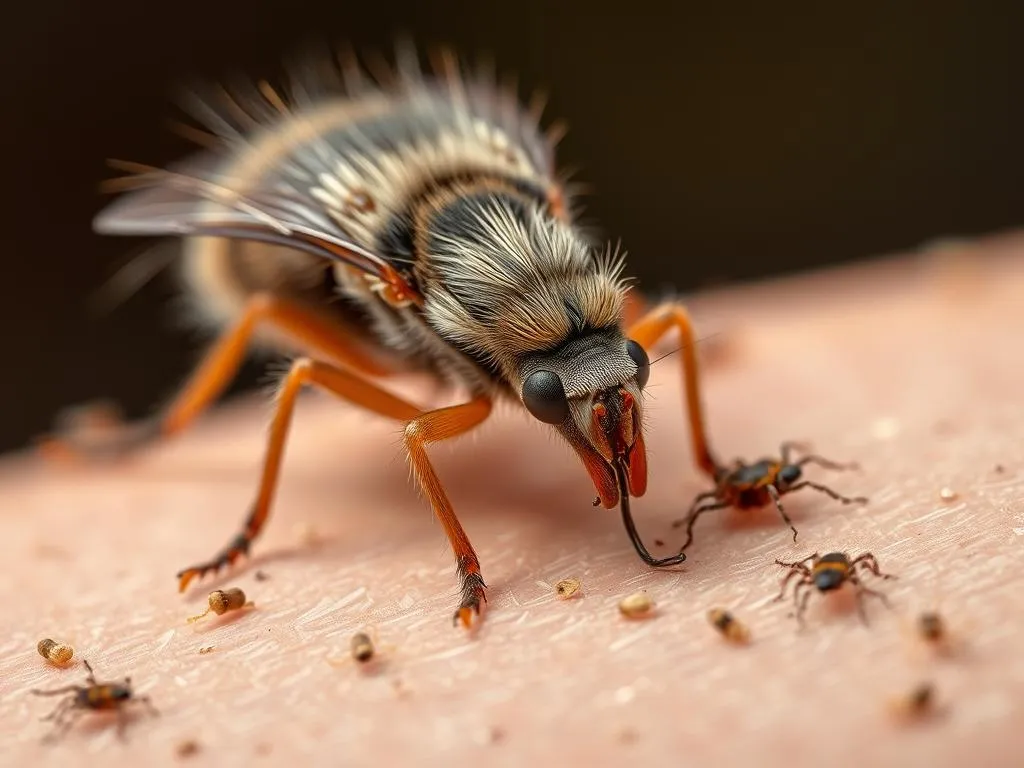
Introduction
Dog health care is a crucial aspect of responsible pet ownership, especially during flea and tick season. This period poses unique challenges for dog owners, as these pests can cause significant health issues for our furry friends. As the weather warms up, the prevalence of fleas and ticks tends to rise, leading to increased risks for infestations. Studies show that nearly 30% of dogs are affected by fleas at some point in their lives, while ticks are responsible for thousands of reported cases of tick-borne diseases each year. Understanding how to prevent, identify, and treat flea and tick infestations is essential for maintaining your dog’s health and happiness.
Understanding Fleas and Ticks
What are Fleas?
Fleas are small, wingless insects that feed on the blood of mammals, including dogs. The lifecycle of a flea involves four stages: egg, larva, pupa, and adult. Flea eggs can fall off your pet and hatch in your home, leading to infestations. Common signs of flea infestations in dogs include:
- Excessive scratching or biting at the skin
- Flea dirt (small black specks) in their fur
- Red, irritated skin or hot spots
- Hair loss in areas where fleas are prevalent
What are Ticks?
Ticks are arachnids that latch onto the skin of their host to feed on blood. Like fleas, they also have a lifecycle that includes egg, larva, nymph, and adult stages. Ticks can carry various diseases that affect both dogs and humans. Common signs of tick infestations in dogs include:
- Visible ticks on the dog’s skin
- Redness or swelling at the site of attachment
- Behavioral changes, such as lethargy or loss of appetite
Health Risks Associated with Fleas and Ticks
Fleas and ticks are not just annoying; they can lead to severe health issues for dogs:
- Fleas can transmit tapeworms and cause flea allergy dermatitis, leading to severe itching and skin infections.
- Ticks are known carriers of diseases such as Lyme disease, Rocky Mountain spotted fever, and anaplasmosis, which can have serious consequences if left untreated.
Flea and Tick Season: Timing and Duration
Seasonal Patterns
Flea and tick season typically occurs in the warmer months, from spring through fall. However, in some regions, these pests can be active year-round, especially in moderate climates. Understanding the seasonal patterns of flea and tick activity is crucial for effective prevention and treatment.
Factors Influencing Flea and Tick Activity
Several environmental factors contribute to the prevalence of fleas and ticks:
- Weather conditions: Warm, humid weather creates an ideal breeding ground for fleas and ticks. In particular, temperatures above 60°F (15°C) can lead to increased flea activity.
- Environmental factors: Areas with tall grass, wooded regions, and even your backyard can harbor fleas and ticks. Regular maintenance and awareness of your dog’s surroundings are essential to minimize exposure.
Prevention Strategies for Fleas and Ticks
Regular Veterinary Check-ups
Routine veterinary visits are vital for maintaining your dog’s health and preventing flea and tick infestations. Your veterinarian can recommend suitable preventive medications based on your dog’s lifestyle and risk factors.
Preventative Medications
There are various preventative medications available, including:
- Topical treatments: These are applied directly to your dog’s skin and can repel or kill fleas and ticks.
- Oral medications: These are ingested and work systemically to eliminate fleas and ticks.
- Collars: Flea and tick collars release chemicals that repel these pests for an extended period.
Each method has its pros and cons. Topical treatments may wash off with water, while oral medications may require a prescription. It’s essential to choose the right option for your dog’s needs.
Environmental Control
Maintaining a flea and tick-free home involves a few key strategies:
- Regular cleaning: Vacuuming carpets, rugs, and furniture can help remove flea eggs and larvae. Don’t forget to wash your dog’s bedding regularly.
- Yard maintenance: Keep your yard tidy by mowing the lawn and trimming bushes. Removing debris and keeping grass short reduces potential habitats for these pests.
Grooming Practices
Regular grooming and bathing can significantly reduce the risk of flea and tick infestations. Consider the following tips:
- Brush your dog’s coat frequently to remove any visible pests.
- Use flea combs to check for fleas and their eggs.
- Bathe your dog regularly with a veterinarian-recommended shampoo.
Identifying Infestations
Signs of Fleas
Being vigilant about identifying fleas can help you tackle infestations quickly. Look for:
- Small, jumping insects in your dog’s fur.
- Flea dirt, which can be identified by placing it on a damp paper towel; if it turns red, it’s flea dirt.
- Behavioral changes, such as constant scratching, biting, or licking.
Signs of Ticks
Checking your dog for ticks is crucial, especially after walks in wooded areas. Look for:
- Visible ticks attached to the skin; they can vary in size and color.
- Symptoms such as fever, lethargy, or loss of appetite, which may indicate tick-borne illnesses.
Treatment Options
Home Remedies
Some pet owners prefer natural remedies for flea and tick control. Popular options include:
- Essential oils: Certain oils like lavender or peppermint can repel fleas and ticks, but always consult your vet before use.
- Diatomaceous earth: This natural powder can be sprinkled in your yard to kill pests by dehydrating them.
Veterinary Treatments
If an infestation occurs, it may be necessary to consult your veterinarian for prescription treatments. Options can include:
- Stronger topical treatments or oral medications.
- Insect Growth Regulators (IGRs): These prevent flea eggs from developing.
Post-Infestation Care
After treating your dog for fleas or ticks, follow these steps:
- Continue preventative treatments: Follow your vet’s advice on ongoing prevention.
- Monitor for signs of reinfestation: Keep an eye on your dog’s behavior and coat for any new signs of fleas or ticks.
Special Considerations
Flea and Tick Prevention for Puppies and Seniors
Different life stages require different approaches. For puppies:
- Consult your veterinarian for age-appropriate treatments.
- Choose gentle, safe products designed for young pets.
For senior dogs:
- Consider their health conditions when selecting flea and tick treatments.
- Regular check-ups are crucial to adjust prevention strategies.
Allergies and Sensitivities
Some dogs may have allergies or sensitivities to certain flea and tick treatments. If your dog shows signs of an allergic reaction, such as excessive itching or swelling, consult your veterinarian for alternatives.
Conclusion
Proactive care during flea and tick season is essential for maintaining your dog’s health. By implementing a comprehensive prevention strategy that includes regular veterinary check-ups, appropriate medications, environmental control, and grooming practices, you can significantly reduce the risk of flea and tick infestations. Always remain vigilant for signs of these pests and act quickly if an infestation occurs. Your furry friend’s health and well-being depend on it.









